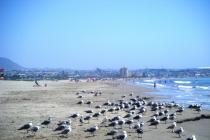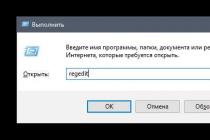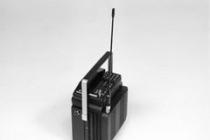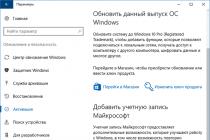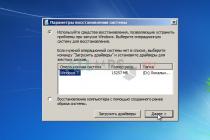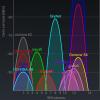We left for La Serena hard and chaotic, instead of the planned and paid bus at the very last moment, we changed everything and flew by plane (travel time was only 45 minutes). The night before, the neighbors were so noisy on the terrace, apparently celebrating Valentine's Day, that it was completely impossible to sleep, and Mario bought plane tickets on the Internet, apparently realizing that he could not afford a six-hour bus ride. I agreed, although the bus after a sleepless night did not frighten me personally.
The flight was short and pleasant, and already at 12.00 on Sunday we were at the hotel, which we had booked in advance from Santiago.
Leaving our things at the reception (since they have a check-in at 16.00!), We went for a walk along the embankment. I was immediately surprised by the lack of crowds on the promenade and on the beach compared to Vigna and Reñaca, where it is simply impossible to get around in the high season.
1

Here is a completely different picture, there are much fewer people and the embankment itself is long and spacious. In general, the infrastructure on the La Serena embankment is not as promoted as on the central coast, there are few restaurants, taxis do not drive often, there are not enough hotels, basically everything is built up with modern residential buildings, where apartments are actively rented out during the beach season, in general, everything is a little provincial. but on the other hand and nice, not as noisy and crowded as in Vigne. We went for lunch to a popular restaurant on the recommendation of a taxi driver, called Picada de Lupa, everything is very simple and tasty, the portions are huge, I took, of course, corvina and empanada (pie) with seafood. The place is not very touristy, mostly locals go there to dine, and tourists, of course, wander in on a tip from taxi drivers. Back at the hotel, we finally settled into a small room (but for $ 100 for two with breakfast, whatever you want!) And went to the beach, a stone's throw from the hotel, across the street. The beach is wild, no sun loungers, no umbrellas, but the ocean, the ocean! What a Quiet he is, he is just a living creature! Seething, noisy, such power, the waves are huge in the distance, closer to the coast they crash with a noise, surfers ride on them on their boards, jump, dive under them, it's scary! And ordinary bathers just jump in the waves, you can't really swim here, only in the pauses between the waves. I experienced a real wild delight, jumping under the wave, substituting my body for a natural hydromassage. Such an animal pleasure, she squealed with delight all the time! And the water is not cold at all, about 22 degrees, the farther north, the warmer it is. In general, I got a lot of pleasure! Even Mario accompanied me a little in the ocean, which is not typical for him, but here he also enjoyed it. I was jumping in the water like crazy for two hours.
1

Couldn't get enough of the ocean.
In the evening we went for a walk to the center of La Serena, to the old town. First, we looked at the city's business card - Mayak.

The center is very beautiful, colonial-style buildings with carved balconies, many old churches, everything is in very good condition, restored, painted, just sweet, it's nice to walk around the city.

We wandered, wandered, everything pleases the eye (of course, only the tourist center, if you go a little deeper, there is a completely different picture). Had a snack in a cafe next to the Merced church. The view from the window is like a postcard.

The next day on Monday, after a delicious and plentiful breakfast with lots of fruits, we drove to the center of La Serena. I wanted to see their famous old craft marketLaRecovaand japanese garden... We got to the center by bus and walked towards the market. We walked along a street where there were mostly only hairdressers. So funny, there are rows of small rooms with 1 or 2 chairs, it costs $ 2.5 to get a haircut.
The craft market is very bright and noisy, there are many tourists selling handicrafts, papaya sweets, woolen products from llama, alpaca, vicuña.

At the entrance to the market, a man drove a dressed-up white llama, very clean and pretty, but did not allow her to be photographed for free, skillfully closing her from the cameras and demanding $ 1 per photo. But I still contrived and photographed her in all its glory! On the market, of course, I could not resist and bought myself a ring with purple amethyst in silver for only $ 25 and Lizka an alpaca blouse. Then we wandered off to look for a Japanese garden, walked around the center, in daylight everything looks even better than in the evening.

I wanted to buy excursions to the marine reserve and the Elki Valley in the city, there they are cheaper, but Mario did not allow me, said that you can only buy at the hotel, there are supposedly better guarantees and buses (in fact, it turned out to be the opposite). Okay, let's go to the Japanese garden. Such a charm, this is a gift from the Japanese to the city, 30 years ago a friendship began between Chile and Japan, and on this occasion the Japanese made such a gorgeous gift. Indeed, the garden adorns the city very much! Authentic Japanese design, with slides, rocks, gazebos, pagodas and waterfalls.
2

Black-necked swans, herons, ducks swim in the lake.
2

It's nice to walk, sit in the gazebos, get aesthetic pleasure. We returned to the hotel and went to lunch at the buffet, which, as usual, ended in complete gluttony on my part. So many times I swore not to go to the buffet, but it's so convenient and inexpensive, okay. Then I booked excursions at the hotel and went to the beach for a swim. It was much more windy that day than on Sunday and I didn't last long there, retreating to the pool.
The next day, early in the morning, I went alone on an excursion to the marine reserve Punta choros... It is 120 km. from La Serena, a trip to the islands where dolphins, penguins, seals and many seabirds and other animals live in their natural environment. I have long heard about this trip as very extreme, since you can only get there on small fishing boats. I have been running around with this idea for a long time, pondering whether to swim or not to swim, but nevertheless I made up my mind despite the fear of seasickness. Mario did not dare, he said that he would never get into such a boat and stayed to rest from me at the hotel. But I must give him his due, he always said that if I really want to get to this place, then I must definitely go there despite the fear of seasickness, so that later I will not regret the missed opportunity. In general, I made my dream come true!
Such an excursion costs $ 50, organized for 10-12 people, taken by minivans to this place, from where fishing boats depart. Quite tiring, but worth it. The guide of our group, Belgian Lisette, 55 years old, rather overweight, has lived there for 11 years, speaks good Spanish, English, French. In our group there was one woman of about 80 years old, it was felt that it was hard for her, but she endured everything, well done! They waited for their turn at the pier for a long time, there were a lot of tourists, then they put on life jackets, plunged into fragile boats and sailed to the islands, sailed quite far, about 50 minutes. fly in all directions, after 5 minutes I was already all wet.

But on the way we saw dolphins! They are so beautiful, friendly and not afraid at all, they swim close to the boat and swim next to it, periodically jumping out of the water!
2

Such a thrill, everyone squealed with pleasure! Finally we swam to the island where penguins and seals live. First we saw a lot of different seabirds on the rocks, everything is literally covered with them, and then there are penguins, there are a lot of them, but they are so small, this is a breed of such Humboldt penguins, they are very shy and motionless.

They didn't make much of an impression on me. I liked the landscapes, caves, grottoes dotted with birds, I don't even know what they are called, the cutest with red beaks, pelicans, albatrosses.

We saw nutria, cute, fluffy, running on rocks like cats, very fast, I could not even photograph them. For some reason, very little time was taken at the seals' rookery,


where we stopped and walked.
2

Beautiful views and landscapes, I didn't swim, it was pretty cool.

When we sailed back to the mainland, we went to dine at a coastal restaurant, everything is delicious and good. After eating the fish, I decided to buy a scallop pie from the local kiosk. A funny incident happened there. I ordered a pie for a fat aunt, 5 minutes have passed, I see that my group is already gathering at the bus, then I tell her, senora, where is my pie, I am in a hurry, couldn’t it be faster. She brings me a pie and says reproachfully, I am a senorita. It became uncomfortable for me, I had to apologize. That's what it means to be fat!
We arrived at the hotel at 6 pm, and I immediately went swimming. I immediately came to my senses, the water took away all the fatigue! And in the evening we went for a walk along the embankment and went to a charming Peruvian restaurant, where I once again tasted ceviche and a delicious Peruvian dessert suspiro limeno (lima sigh), after all, Peruvian cuisine is my favorite, only here they all make much less spicy , Chileans are not very fond of spiciness.
On Wednesday, we had an excursion with the same travel company to Elki Valley. We went there together, Mario had already been there once and immediately said that it was a very beautiful place and it was necessary to go there. This valley, as they say, has some kind of miraculous biofield, so all sorts of meditation centers were built in it, where people come in large numbers and meditate, being charged with positive energy. I do not believe in this nonsense, in my opinion they are simply pumping out money. But the fact remains. It is also believed that this region has the cleanest and most transparent sky and therefore there are a lot of astronomical centers and observatories, where night trips are also organized to observe the sky and stars through a telescope. We have postponed this event for later, because you cannot embrace the immensity. The Elqui Valley is a huge agricultural oasis surrounded on all sides by the Cordillera. What is not grown here! Papaya, chirimoya, avocado, a variety of vegetables and fruits, and of course grapes! The vineyards at this time of year are already very beautiful, with large multi-colored clusters hanging in the vines.

Many plantings are protected from the winds with a special film stretched on the sides. I think my mom would love it here! Such an agricultural paradise! Quite recently, a huge reservoir with water was built in the valley in case of drought, it will have enough water reserves for 4 years. This reservoir looks like a natural lake surrounded by mountains.
2

Very nice! I also really liked the huge cacti, you drive along the road and you see the hills completely covered with them.
1

It also looks very picturesque!
It is very hot in the valley, much hotter than on the coast, a special microclimate favorable for grapes and everything else.
2

We stopped by a papaya plantation, and immediately sold papaya fruits and all kinds of confectionery products from it.

Chilean papayas are not like Angolan papayas, they are subtropical papayas, the fruits are small, palm-sized and cannot be eaten raw, only after heat treatment.

I bought boxes of papaya candy like dried fruit. Pretty tasty! They also took pisco to the factory, where they showed the entire production process, gave them a taste. Naturally, Mario tasted his fill and was so inspired that he bought as many as 5 bottles of pisco in the store. Then he himself did not understand why he did it. Impulse shopping, I said! Pisco is really wonderful, but unfortunately I am completely indifferent to this drink, I like cocktails from it more, a mixture with mango, chirimoya, melon. Around the factory there are many fruit trees, figs, nuts, oranges. I have tasted fresh figs, how delicious they are when straight from the tree!
We stopped in the town of Vicuña, considered the capital of the Valley, reminded a little of the Peruvian Ilo, one-story houses in continuous rows, small shops, of course a square with a church. Nothing special. The most kravivye are the age-old trees with red peppers, called Pimiento, growing around the square, giving shade.
1

In general, I liked the natural landscapes and plantations much more than the towns and villages that we saw during the excursion. Some of the valley's landscapes are truly mesmerizing. On one observation deck, we saw mountains shimmering in different shades, pink, gray, beige, depending on the composition of the minerals,
1

It struck me so much that I could not tear myself away. You look and think, and God created such beauty, just something incredible!
3

These pictures are forever imprinted in my head. So much beauty in one day is not easy to digest!
Dined in a small village restaurant, pretty good, they gave local food, I took corn pie, pastel de choclo, something like a casserole of ground corn with meat and vegetables. Mario, of course, wanted to dine at an expensive restaurant, but he had to put up with it, group tourism!
I was amazed by one married couple from our group. He is Swedish, she is Chilean, and the pronounced Mapuche (that is, Indian blood) is scary as hell. And he is happy, jumping around her. They live in Sweden, apparently she left after the coup and became a European. Even Mario agreed with me that a very unequal pair, this Swede has no eyes to such an extent! I was very indignant at such injustice!
The last part of the excursion did not make an impression on me, we went to Monte Grande and Pisco Elqui, small mountain villages, or towns.

The main attraction that was born and lived there is Gabriela Mistral, the famous Chilean poet, Nobel laureate. They showed the school where she worked, the house where she lived. Nothing special, everything is very poor and modest.
During the stops, we saw other groups from those travel agencies, where I originally wanted to book excursions in the city, but Mario resisted. And what I saw - their buses were better and more comfortable, Mercedes-Benz ones, and the price was cheaper. Mario also admitted his mistake, but it was too late to change something.
The excursion dragged on until 7 pm, rather tiring, but I was very pleased, I saw a lot of unusual and beautiful things. In the evening, despite being tired, I still went to the beach and swam for an hour in the ocean, where a huge jellyfish snatched me. It passed quickly. It's OK.
And then we admired the sunset from the balcony of the hotel, it is so beautiful on the ocean, you watch how the sun ball quickly and quickly sinks in the water, and how the colors and shades of the sky change during this process. We had a seafood dinner at the hotel restaurant, the buffet was refused, that evening there was Italian cuisine, and Mario cannot eat anything starchy. And it’s very good, otherwise I would have eaten again!
On Thursday we took a taxi and drove ourselves to Coquimbo, it is a port city, very close to La Serena.

At the port we boarded a catamaran and rode for an hour along the coast.
1

Maybe I’ve already got drunk, or maybe there really is nothing to do for a foreign traveler, the city was not at all impressed. But a few words about him are still worth saying.
About La Serena
La Serena is a small old town on the Pacific coast. In the 19th century. copper and silver were actively mined here, which made it one of the richest cities in Chile, and today it lives and is still quite prosperous due to tourism and agriculture - first of all, winemaking.
The main historical and cultural sights of the city are concentrated in the Old Center, where many buildings of the colonial era have been preserved.


Many of them were destroyed during the 1730 earthquake, but some survived.
There are 29 churches in the city,


the most famous of them is the Cathedral of the Roman Catholic Archdiocese, built in the neoclassical style in 1856 and declared a national treasure in 1981.

What to see
And one of the most popular attractions here is the Japanese Garden. This is a theme park located on an area of 26,000 square meters. and is the largest Japanese garden in South America.




Finally, I was able to take a close-up photo of this unusual color swan!

The Faro sea lighthouse is considered the symbol of La Serena, which still remembers the attacks of the pirate Francis Drake.

Although La Serena is considered a popular resort among Chileans, I didn't like the beach.

For what I love South America, it is for the many bright flowers and shrubs on the streets. Straight soul rejoices. Still there would be more of them ...


Vicuña town
An hour and a half from La Serena is the town of Vicuña ($ 4 bus ticket).
Mamaluka Observatory
This city has 300 days of sunshine, and the sky in this region is considered the cleanest on the planet, so the Mamaluca Observatory, the largest in the Southern Hemisphere with 18 powerful telescopes, is located not far from the city.

The cost of a tour to the observatory with a transfer is $ 16.5, without a transfer $ 11. The tour can be purchased at the municipality located in the main square.
Just admire what wonderful photographs of the Moon were made by the guide on my phone through one of the telescopes. I highly recommend visiting at least one of the observatories in Vicuña, there are several of them, Mamaluca is the cheapest.
By the way, in San Pedro de Atacama, where tourists from all over the world like to come, there is also an observatory, only an excursion there costs 2.5 times more.

bright spots are craters, in fact, their size is tens of kilometers each

As soon as I checked into the hostel, I immediately met a girl from Switzerland, Rebecca.

By the way, the first Swiss woman on my long journey, I just recently thought, I don't meet the traveling residents of any countries, or I meet very rarely in South America, and the Swiss were the first to come to mind. I voiced this idea to my new fellow traveler and she agreed with me, said that she was not like everyone else. And by the way, he has been traveling non-stop for 3 years!
People like Rebbeka, these are my brothers, sisters in reason, we very quickly find a common language, we are interested in together and it is always a pity to part afterwards.
What to see in Vicuña
The first thing we did was go to the municipality and ordered a night excursion to the observatory, and then we went for a walk.

a great idea to carve sculptures from dead trees without digging them out of the ground
Just two kilometers from the city center, there is a hill with a TV tower at the top, which offers a wonderful view of the city and its surroundings.

this is a view from one side of the hill

and this is on the other, on the city

at the top there is also an installation of Christ, whose hands were broken by the marauders ((

Well, and this is me, in white socks)) How do you like my new glasses?)) For the second, the first lasted less than a week (((
In the evening, Rebbeka and I came to the municipality to go to the observatory, but we were upset, the sky was overcast, the excursion would not take place. So much for you! Here is the clearest sky on the planet! But we had another try, we both planned to stay in Vicuña for a few more days.
Here, among travelers, bike tours are very popular (rent for a whole day costs $ 10), there are several self-guided bike tours, one of them is a circular tour of bodegas of wine, beer and pisco.
Reference: Pisco (Spanish Pisco) is a strong alcoholic drink, a kind of grape vodka. Produced in Peru and Chile from Muscat grapes. The main ingredient in the Pisco Sour cocktail.
Drive to Pisco Elqui
Or you can take a bus (ticket price $ 4) right with a bike, and in an hour disembark at one of the neighboring hippie villages called Pisco Elqui.




I fulfill the request of one of my regular readers, but I will talk about the production of grape vodka, not grape wine.))))
The birthplace of the Chilean pisco is the village of Pisco Elqui in the valley of the same name. Of course, having arrived in the Elqui Valley, one cannot but visit the pisco production for cultural enrichment.
One of these productions with a free guided tour and tasting is called Doña Josefa

such a bottle costs 13 dollars
Since pisco is made from grapes, the production is a bit like wine production - the same barrels for fermenting grape cake,


Our guide to the production of grape vodka. With a characteristic, puffy face of a frequent taster)))
hangars for crushing grapes, and the like.
And the main product is grown right there, in the valley

these huge, green areas are all vineyards
these huge, green areas are all vineyards, without them the valley would be just a desert without vegetation. Note that even the hills surrounding the valley are planted with bushes, tens of meters up. A very practical approach, every free meter is used.
The road from Pisco Elqui to Vicuña
If you go by bus, why do you need a bicycle? - you ask.
And then, for about 12 km, starting from Pisco Elqui, in the Elki valley, there are several tiny villages with beautiful views around, and the road goes down all the time, so God himself commanded to take a bike trip along them.

The next village after Pisco Elqui was called Monte Grande,

here we tasted the freshly squeezed juice from the Copao cactus, which is very popular in the area. The cost is $ 4. Nifiga is not cheap ((

Along with the highly alcoholic drink Pisco, the locals have another pride, the Chilean poet, educator, diplomat, fighter for women's rights (in short, a feminist), Nobel Prize laureate in literature - Lucila de Maria del Perpétuo Socorro Godóy Alcaya, more pseudonym Gabriela Mistral, who was born in Vicuña, and there is a mausoleum in Monte Grande

and a museum. And in Vicuña it is, only free. It's funny, two settlements are 50 km from each other, and there and there a museum dedicated to one person. An attraction sucked from the finger, in my opinion, when you want to make money on something, it's about Monte Grande.



Having reached the last village, we had to overcome another 40 km, we tried to get on the bus, but it was packed to capacity with passengers' belongings. Then I remembered about the excellent Chilean hitchhiking and yes, do not be surprised, even with two bicycles it is possible, you just need to catch a pickup, which I did. 10 minutes with outstretched hand and we are already rushing at full speed back to Vicuña.
At the end of the wonderful day, there was finally an excursion to the Mamaluka observatory, you saw the photos at the beginning of the article.
And then ...
And the next morning, tearfully saying goodbye to my new friend, I loaded my belongings on the bus and with a change in La Serena left for the new city.
To top it off, Vicuña thanked me for her visit with another amazing view that I filmed.
Javascript is required to view this map.
La Serena is located in the central part and belongs to the administrative region of Coquimbo, province of Elqui. The city lies on the Pacific coast and is famous for its sandy beaches, but in addition, it is endowed with the status of the historical, cultural and wine-growing center of the country, which gives it even more charm. Every year thousands of tourists from all over the world come here to sunbathe in the hot Chilean sun and get acquainted with local attractions.
Peculiarities
La Serena is one of those Chilean cities that pay great attention to the preservation of their cultural heritage. Today, the resort's architecture combines old colonial houses, restored churches, colorful handicraft markets selling unique handicrafts, white beaches and clean streets lined with palm avenues. As befits a popular international tourist center, La Serena has a large number of comfortable hotels, cozy restaurants, shops and entertainment venues. An excellent addition to the cultural program of your stay in the city is an excursion to the Elki Valley, with its orange hills, green vineyards and clear blue skies. Nowadays, in these picturesque spaces, in addition to vineyards, the Chileans have placed their astronomical observatories, which in themselves are an example of modern science and high technology.
general information
The territory of La Serena is small and covers an area of only 65 square meters. km. The population is about 150 thousand people. The spoken language among the population is Spanish. Local time is 7 hours behind Moscow time in winter and 6 in summer. The time zone is UTC-4 and UTC-3 in summer. Calling code (+56) 51.
A brief excursion into history
For Europeans, this land was opened by the Spanish conquistador Pedro de Valdivia, in 1544, and after that a city arose here, which became an important sea transit port, connecting the capital of Santiago with Lima. During the late Middle Ages, the Chilean shores were often subjected to pirate raids, and in 1680 La Serena was burned by English pirates. After some time, the city was restored, and the Spanish style of architecture began to be seen even more in its architecture. In the period from the 18th to the 19th centuries, many churches appeared here, some of which have survived to this day. In the XX century, interest in the city as a place for a beach holiday has grown significantly, and after the large-scale construction of new modern hotels and improvement of infrastructure, La Serena has turned into a comfortable tourist center that can compete in popularity with Viña del Mar.
Climate
Weather conditions at the resort are highly dependent on the season. Winter, which begins in Chile in June and ends in August, is quite cool and rainy here, and the average air temperature is below +10 degrees. The swimming season usually starts in November-December and lasts until March. The thermometer at this time of the year can rise to +30 degrees and above, and the sun invariably pleases vacationers with a large amount of sunlight.
How to get there
The local airport of La Florida accepts flights from different regions of Chile, including the capital. The journey takes about an hour.
Transport
Within the city limits, buses act as public transport. Taxis are actively used.
Beaches
One of the main advantages of La Serena is its beaches. They are distinguished by their width, amazing clean sand and gentle entrance to the water. Some are ideal for surfing. Avenida del Mar acts as the central city beach. High waves and cold ocean currents have a significant impact on susceptible tourists, but true connoisseurs of a beach holiday are not too afraid of these circumstances.
Attractions and entertainment
One of the most attractive places in the city is the picturesque Japanese Garden, designed by the Tokyo landscape designer Akira Ohira. It was created in full accordance with the nature and culture of the Land of the Rising Sun, replete with manicured green lawns, ponds, bridges, pagodas and gazebos. An excellent place for walking is also the Armas La Serena square, with the Cathedral, the Church of Santo Domingo and the Gabriel Gonzalez Vidal Historical Museum located on it. The iconic religious building of the city is the Church of San Francisco, built in the 16th century and surviving many pirate raids. In total, there are several dozen temples and cathedrals in La Serena, harmoniously complementing its architectural appearance.
Curious tourists should definitely pay attention to the numerous city museums, including the Museum of Archeology, with its unique exhibits dating back to the pre-Columbian era, and the UFO Museum dedicated to UFO research. In addition, fans of stars and outer space have the opportunity to visit the Mamaluka Observatory, built in 1995. The surrounding area of La Serena is famous for its picturesque vineyards, which have become the basis for the production of famous Chilean drinks, including the famous Pisco grape vodka, aged in special American oak barrels. Fans of having fun and intensely spending the dark time of the day are advised to visit the local nightclubs and discos with exclusive programs and live music.
Kitchen
At La Serena's culinary establishments, visitors are invited to try a wide variety of dishes to suit all tastes, from cinnamon soup called Casuela de Ave to corn flour cakes called humitas. You should definitely try Chilean sandwiches, brandy with lemon juice "pisco sour" and always fresh exotic fruits.
Shopping
With rich deposits of lapis lazuli, Chile is famous for jewelry made from this stone. In shops, shopping centers and markets of the city, you can buy a variety of products using lapis lazuli, including all kinds of souvenirs. In addition, inexpensive clothing, elegant Native American figurines, ceramics, gift wines, electronics and much more are sold almost everywhere.
La Serena fully reflects all the advantages of the Chilean province, allowing guests not only to enjoy relaxing on the white beaches to the sound of lapping waves, but also to feel the local atmosphere, getting to know the culture and folk traditions of this amazing country.
Las Campanas is an astronomical observatory equipped with several large mirror telescopes. The construction of the observatory in this very place, in the Atacama Desert, is explained by the large number of cloudless days a year, which makes it possible to use the observatory's potential as much as possible.
The observatory has several different types of telescopes, including the large Magellanic telescopes. The diameter of telescope mirrors ranges from 1 to 6.5 meters, which provides ample opportunities for space exploration. In 2019, it is planned to install the giant Magellan telescope with a mirror diameter of more than 24 meters and a luminous area of 368 square meters, which is 15 times more than the largest telescope currently installed at the observatory.
Coordinates: -29.01429500,-70.69243100
Altiplano
The Altiplano Plateau is one of the most unusual and unique places in the world, combining the most diverse natural beauties. The plateau is located at an altitude of 4000 meters above sea level, which makes it the highest after Tibet.
Altiplano is famous for its magnificent landscapes, as well as many interesting places. For example, the plateau is home to the highest navigable lake in the world, Titicaca, famous for the floating islands that are home to the Indians, as well as the world's largest salt lake, Uyuni. Many picturesque mountains, gorges, valleys with geysers and lakes, which are the habitat of various species of animals and birds, look no less delightful.
Coordinates: -16.00358000,-69.65332000
What sights of La Serena did you like? There are icons next to the photo, by clicking on which you can rate this or that place.
Damas Island
Damas Island in Chile is a popular tourist destination. Visitors are attracted by unspoiled nature and beautiful white sand beaches.
The island is located near the town of Punta Choros and is a desert landscape that has become home to many species of animals, fish and birds. In 1990, the island was declared a National Wildlife Refuge due to the diversity of the island's marine life.
The island can offer tourists a vacation on clean white beaches with emerald water, surrounded by the nature of the island. Visitors can also go diving and immerse themselves in a variety of underwater life.
Coordinates: -29.23645500,-71.52899300
The Mineralogy Museum is located in Copiapo, the capital of the Atacama region of Chile. This is the most interesting and one of the oldest museums in the city, founded in the middle of the 20th century. The exposition of the museum acquaints visitors with the study of minerals and rocks of the Atacama region and the country of Chile.
In general, the exposition of the museum is divided into several parts. First of all, these are natural minerals extracted from the bowels of the earth of local territories. There are also crystals of synthetic origin, and separate collections of famous scientists and geologists deserve special attention.
The Mineralogy Museum of Copiapo also contains rare precious minerals, including rock crystal and amethyst, nuggets of gold, silver and platinum, deposits of various metal ores. There are also samples of precious stones: diamonds, malachite and lapis lazuli, jade and others. The Copiapo Mineralogy Museum serves as a powerful scientific base for students of natural sciences at Chilean universities. Thousands of tourists visit it every year.It will be interesting not only for adults, but also for children.
Coordinates: -27.36635900,-70.33223700
Museum of Sacred Art
The Museum of Sacred Art is located in La Serena, Coquimbo region, Chile. This interesting museum was opened at the end of the 20th century. Among the exhibits of the museum are objects of art on religious and cult themes, including those of the pre-Columbian era: relics and shrines of Indian tribes. It should be noted that La Serena is one of the most interesting cities in Chile, which is not inferior to European capitals in terms of the number of museums.
The exposition of the museum is interesting both from the point of view of science and for ordinary tourists. It tells about the history of religion in Chile. The found religious artifacts of Indian tribes are kept here, their cults and beliefs are described, in the period before the discovery of lands by Europeans. Active missionary Christian activity during the first European settlements on the territory of Chile was not ignored. In addition to historical data, there are many cult objects and idols, images of deities.
Coordinates: -29.90630100,-71.25020400
The city of Ovalier
The city of Ovalier is located in the province of Limari, which is part of the Coquimbo region in northern Chile. The city is the center of the city commune of the same name, which area is about 3800 square kilometers, and the population exceeds 108 thousand people.
The city was founded on April 21, 1831, and it got its name in honor of the vice-president of Chilidon, Jose Ovalle. The city's rich history provides a variety of local attractions. The archaeological site of Valle del Encanto is very interesting - a stone ravine with ancient hieroglyphs.
As for the natural attractions of Ovalier, it is worth visiting the Jorge Fray National Park. This unique woodland in the middle of the desert is listed as a UNESCO World Heritage Site. In the city itself, visit the park near the Plaza de Armas - there are many interesting monuments and memorials. The unique climate and fertile soil of this area allow to grow good varieties of grapes, from which delicious red wine is produced here, exported to many countries of the world. From Muscat grapes they make a strong alcoholic drink “Pisco”, the name of which translates as “flying bird”. Tourists can explore the town of Ovalier and local wineries on a guided tour.
Coordinates: -30.58333300,-71.20000000
The most popular attractions in La Serena with descriptions and photos for every taste. Choose the best places to visit the famous places of La Serena on our website.


